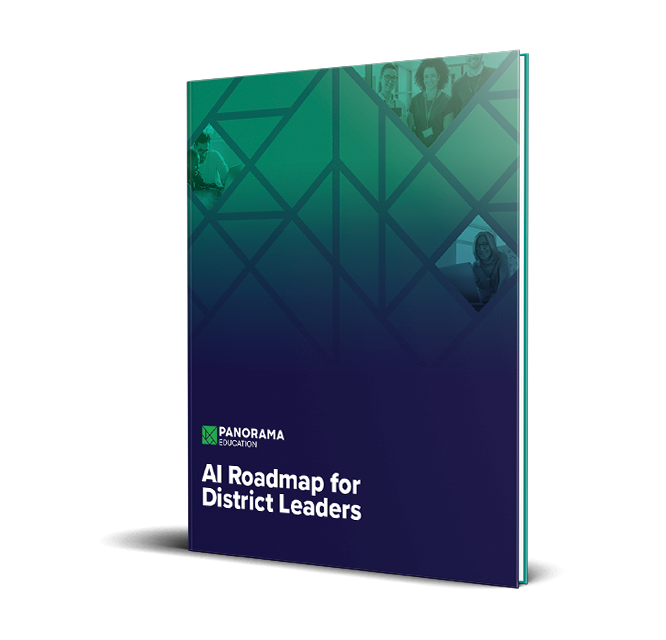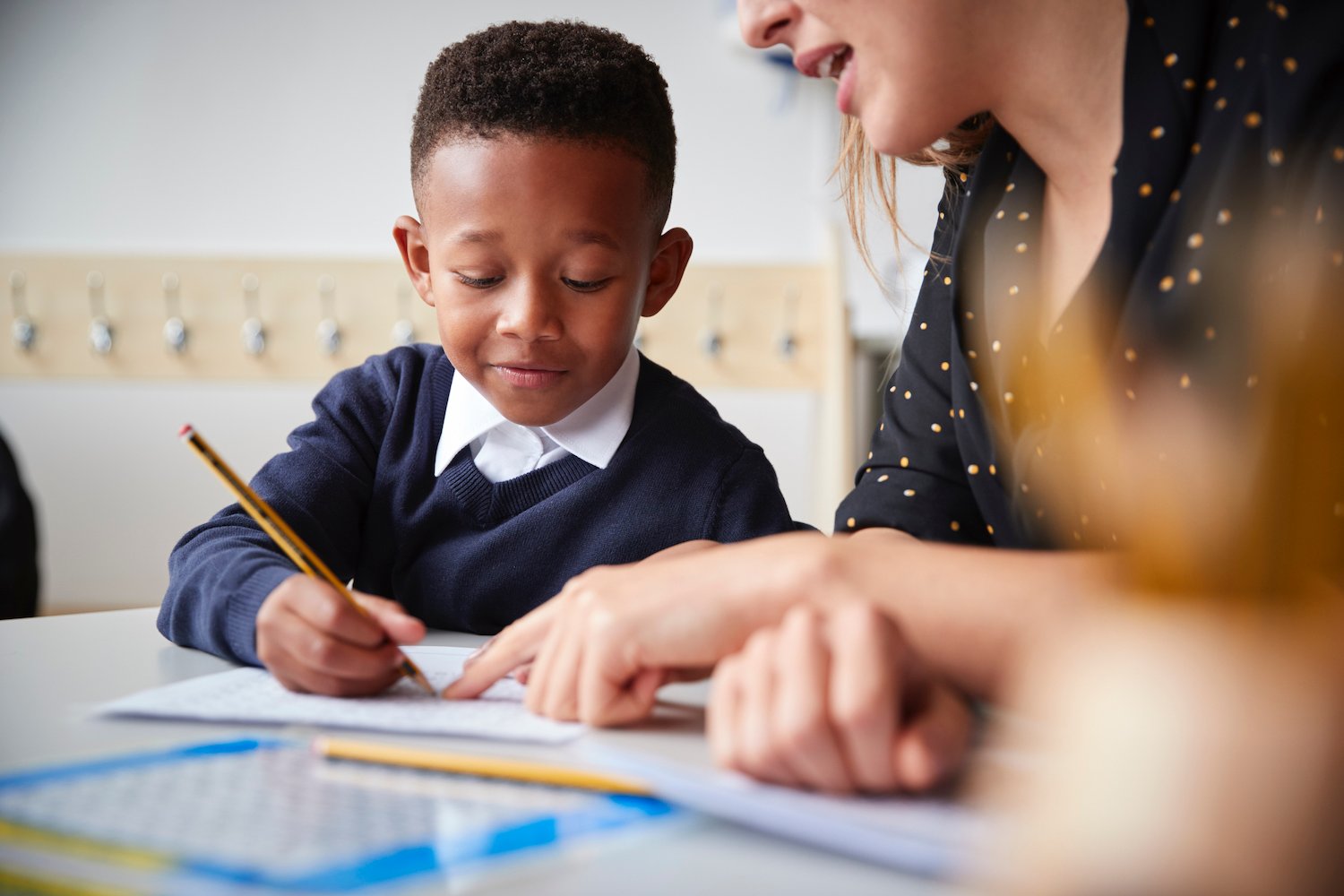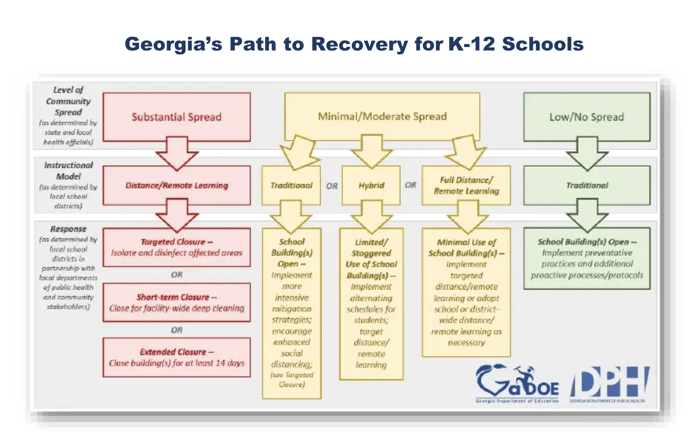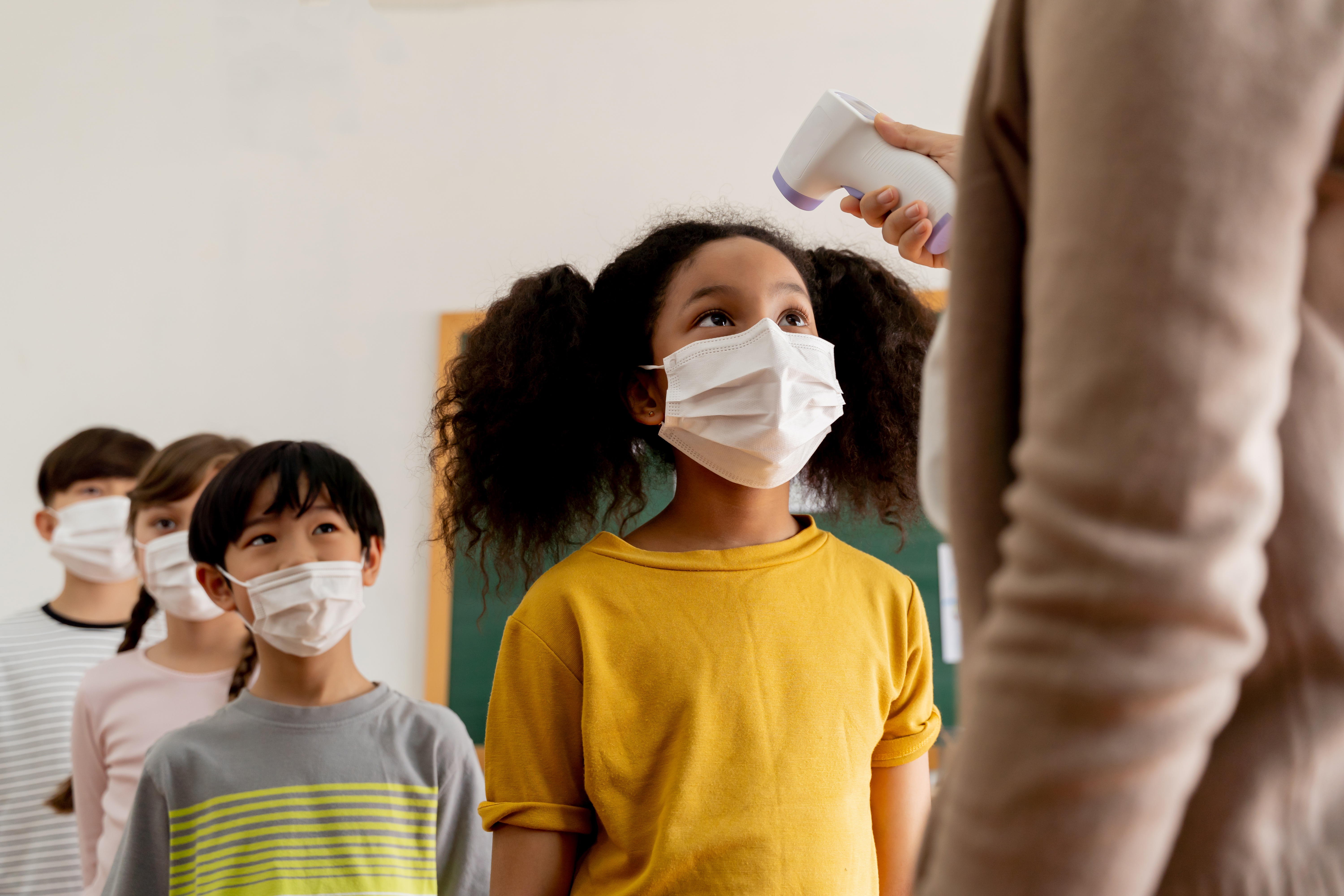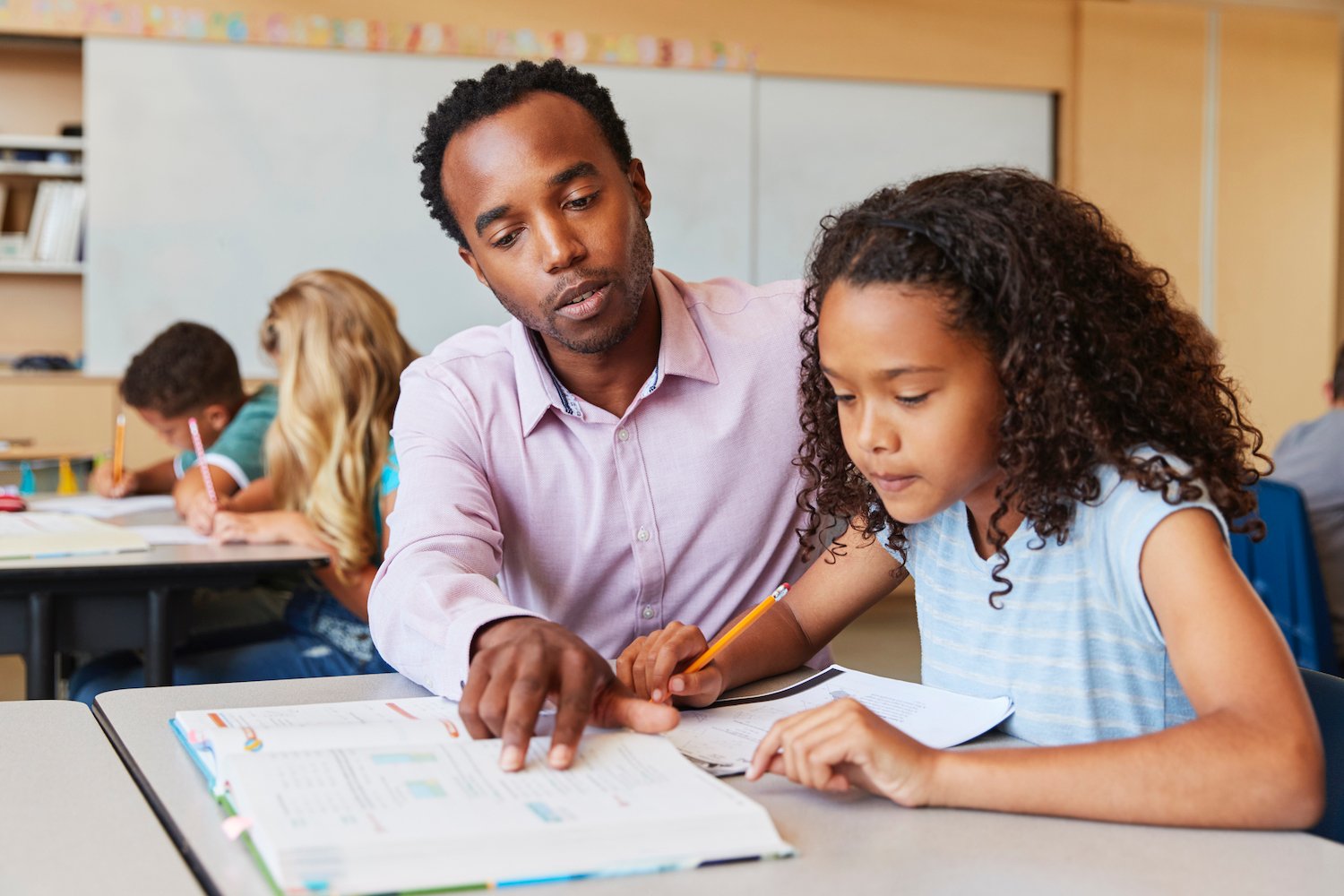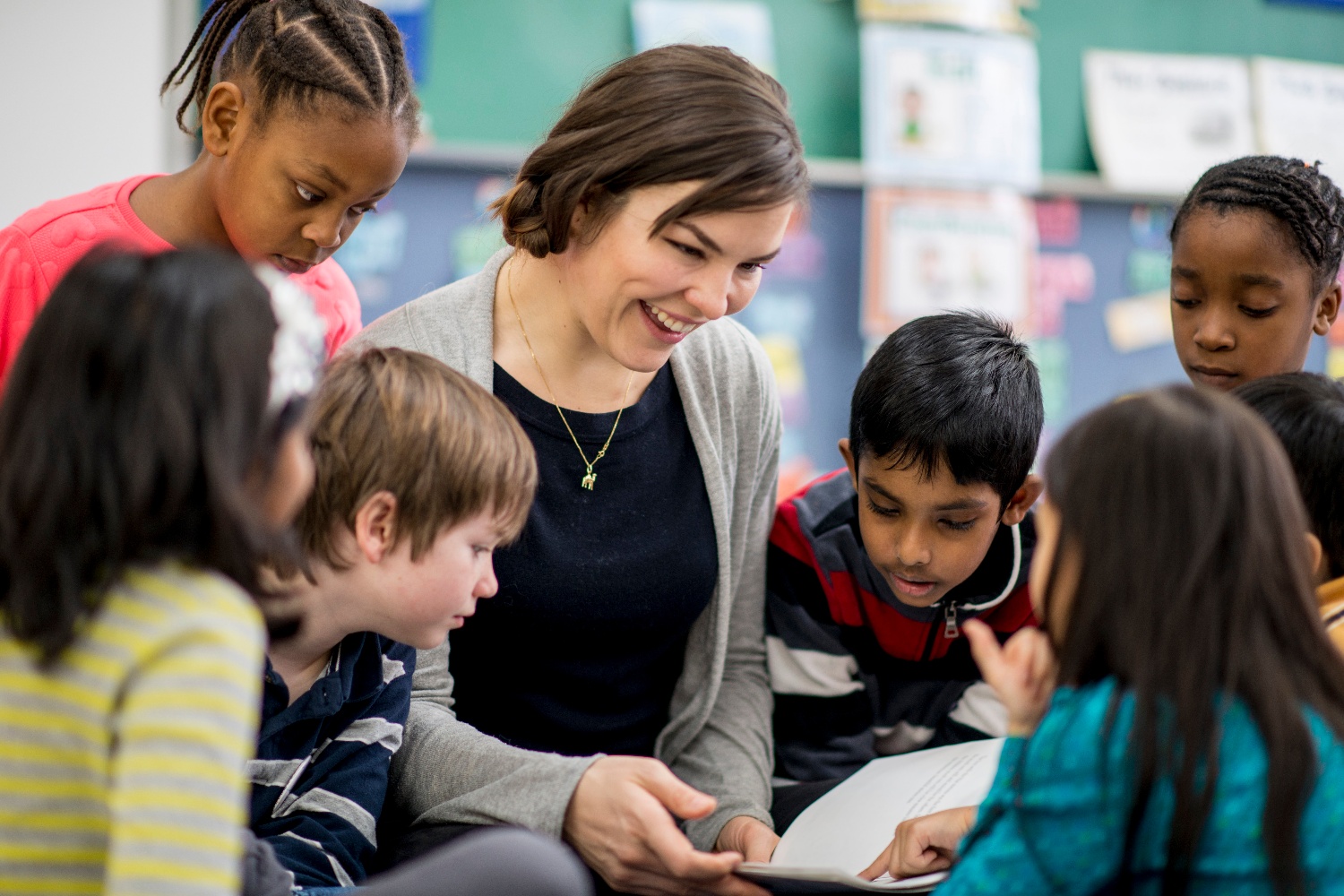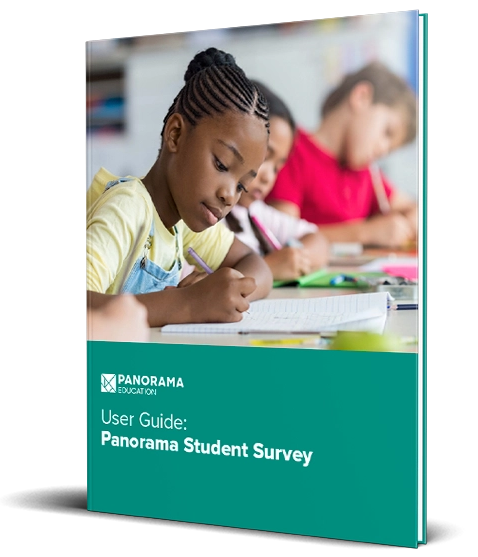Last updated on October 27, 2020.
As districts considered their options for reopening in the 2020-21 academic year, the majority of state and district leaders proposed a hybrid learning model for when students returned to school in the fall.
This approach blends the intimacy and immediacy of traditional face-to-face instruction with the flexibility of asynchronous and synchronous online learning—in hopes of curbing the spread of the coronavirus disease (COVID-19).
Below, we rounded up the latest examples of hybrid learning plans from districts and states across the country.
Many of these plans are subject to change based on community feedback and public health guidelines. We'll continue to update this article as new information is available.
What Is Hybrid Learning?
|
Hybrid learning combines face-to-face instruction with online learning. In the context of coronavirus school re-openings, a hybrid model would reduce the number of students in the building by moving some of the course delivery online. Sometimes referred to as blending learning, hybrid learning lends itself to individualized learning, collaboration via online discussions, and several modes of interacting with course content for different learning styles. However, it does present challenges when it comes to ensuring positive and equitable learning outcomes. |
Nationwide Status Updates for Fall 2020
Reopening Plans
According to MCH Strategic Data's ongoing research of the COVID-19 pandemic (which covers 84% of school districts in the United States):
- 52% of districts are offering hybrid learning
- 22% of districts are offering online learning only
- 19% of districts are offering in-person classes
- 76% of districts are offering parents an option to 'opt out' their children for in-person learning
- 72% of districts have increased investment in technology to support student accessibility in online learning
COVID-19 Related Policies
According to MCH Strategic Data's ongoing research of the COVID-19 pandemic (which covers 84% of school districts in the United States):
- 94% of districts require all teachers, administrators, and staff to wear masks on premises
- 78% of districts require all students to wear masks on premises
- 71% of districts have a COVID-19 illness return policy in place
- 73% of districts have a designated isolation area for students and personnel that are symptomatic
- 54% of districts currently have students participating in a district-sponsored athletics program
- 50% of districts have yet to close or temporarily shutdown in the 2020-21 academic year
- 9% of districts are closed indefinitely for in-person learning; 5% have temporarily closed for 1-14 days
Teaching and Professional Development Trends
According to a recent report from Tyton Partners that explores how educators have adapted to teaching during the COVID-19 pandemic:
- The percentage of teachers supporting students remotely has increased 6x across all grade bands since March 2020
- Across all grade levels, 75% of educators are receiving training on the use of digital tools/platforms; 30% are learning how to engage students in a remote environment
- Reports on the quality of PD received during the past several months pandemic have been mixed; 40% feel that the professional development is worse now versus before the pandemic
- Across all grade levels, teachers are actively pursuing professional development opportunities on their own; over 42% are investing their own dollars
- Many educators crave more personalized PD content delivered in a flexible format
A Look Inside Hybrid Learning Reopening Plans
1. Ann Arbor Public Schools (MI)
Ann Arbor Public Schools, slated to begin the new school year on August 31, has released a document that proposes "shared learning time." This instruction model would blend an in-person and virtual learning environment when the state enters Phase 5 of the Michigan Safe Start Plan.
Depending on public health guidance, 25 percent to 50 percent of students could have an in-person learning experience one to two days per week. On the other days of the week, students would participate in online learning. The document states that, at a 25 percent setting, up to nine students may be present for face-to-face learning in Phase 5 blended learning. At a 50 percent setting, up to 16 students may be in the classroom.
"Whether students are attending at 25 percent or 50 percent, or at some other level, is dependent on whether small or medium-size gatherings are permitted to fulfill public health guidance," said Ann Arbor Superintendent Jeanice Kerr Swift in The Detroit News.
On July 15, 2020, Superintendent Swift released a public statement to the Ann Arbor community reiterating that the district is working to consult with public health experts and monitoring COVID infection rates "to plan and prepare in every way possible to have our children and staff with us, in-person in our schools, just as soon as it is advisable to do so."
2. Dallas Independent School District (TX)
As of July 16, 2020, the Dallas County Health and Human Services issued an order delaying in-person instruction for public and private schools for the 2020-21 school year until September 8. While districts may still start the school year virtually in August, Dallas ISD Superintendent Michael Hinojosa recently stated: "I still think we need options and I'm still not optimistic that Aug. 17 is a reality. That's why we need to have another option ready to present to our board next week."
Previously, Dallas ISD's May 2020 COVID-19 briefing from Superintendent Hinojosa had outlined three possible scenarios for school reopening and student learning in August.
According to Hinojosa, Options A and B (to open under normal conditions and to continue with remote learning, respectively) are unlikely. Option C—to open with a blended learning model—is the most likely scenario.
Blended learning would involve students being on campus on certain days of the week. On other days, they would learn at-home with online components.
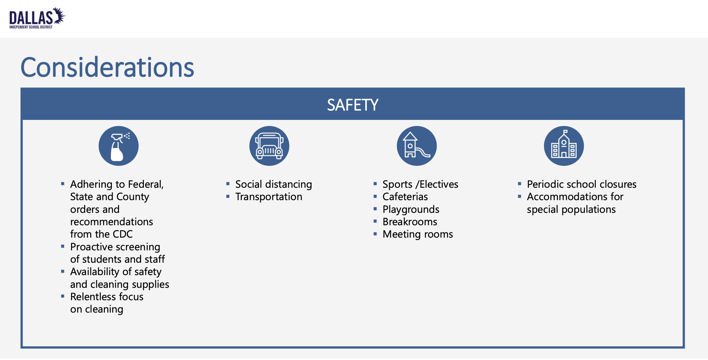
3. California Department of Education
The California Department Education in June released a Guidebook for the Safe Reopening of California’s Public Schools that includes checklists, questions for consideration, and best practices for California districts as they develop reopening plans.
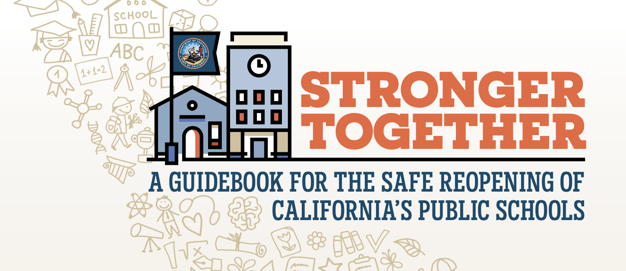
Tony Thurmond, state superintendent of public instruction, outlined several models that schools and districts may explore. Examples include:
"Two-day rotation blended learning:” Students would receive in-person classroom instruction on two days a week based on their grade level. For instance, Monday and Wednesday would be for kindergarten through third grade, and Tuesday and Thursday for grades four through six. On the other days, students would work on “enrichment" learning activities that can be online, in-person, or with small groups. On Fridays, all students would participate in distance learning.
“A/B blended learning model:” Half of the student population would attend class in-person four full days per week, while the other half would engage in distance learning. The students would alternate each week.
“Looping structure:” This structure would allow for stronger teacher-student relationships and student engagement. For K-8 schools, students could stay with the same teacher for multiple grade levels to create "more targeted and efficient instruction," and “a better understanding of health and safety, decreasing risks to students and staff.”
“Early/late staggered schedules:” Grade level cohorts would have staggered start and dismissal class times. There would also be multiple recesses and lunch periods.
4. Jeffco Public Schools (CO)
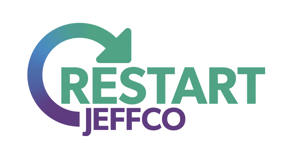 On July 8, 2020, JeffCo released an updated "Restart Plan" that will allow all students to return to in-person learning on August 24, with an option for families to continue remote learning if they do not want their children to participate in face-to-face courses.
On July 8, 2020, JeffCo released an updated "Restart Plan" that will allow all students to return to in-person learning on August 24, with an option for families to continue remote learning if they do not want their children to participate in face-to-face courses.
According to the July plan, the goal is the "group students in a way that minimizes co-mingling of students such as limiting passing periods and in-between class times."
For elementary schools, students will be in the same cohort group for the entire day. For middle and high schools, students will remain in the same cohort group to the greatest extent possible and will attend four classes maximum per day.
Previously this summer, Jeffco's "Restart Model" draft plan considered three models for back to school: a traditional return to school, a remote return, or a hybrid of the two.
Jeffco Superintendent Jason Glass in May told the The Denver Post: “One side says... to keep everyone home. But there are costs to remote learning—academic costs, social, emotional, and economic costs. It’s not risk-free to remain doing only remote learning. Then we hear a lot from this other extreme that says it’s a hoax—that you should... restore all in-person learning. We reject the extreme and polar opposites. We have to find a middle ground that restores in-person learning to the greatest extent we can, but we want to do so in a way that takes every prudent step to keep our staff and students safe.”
Glass had stated that a hybrid model would be likely, with new in-school precautions including coronavirus symptom screening, one-way paths in buildings, keeping windows and doors open for air circulation, and limiting school supply sharing. There would be ‘A’ and ‘B’ days or weeks where students would alternate between online learning and classroom instruction with limited students and staff.
5. Massachusetts Department of Elementary and Secondary Education
The latest guidance from the Massachusetts Department of Elementary and Secondary Education (DESE) says that the state's goal for this fall is "the safe return of as many students as possible to in-person school settings, to maximize learning and address our students’ holistic needs. If the current positive public health metrics hold, we believe that by following critical health requirements, we can safely return to in-person school."
However, the DESE is still requiring districts to create reopening plans considering three possibilities: full in-person learning with new safety protocols; hybrid learning; and full remote learning.
This new guidance is an update since early June, when DESE speculated that the return to school would likely be a hybrid model of in-class and remote learning.
New health and safety requirements for the return to in-person school still include previously outlined procedures, including: staying home if sick; face coverings and masks; frequent hand washing and hand sanitizing; maintaining six feet of separation at all times; isolation and discharge protocols for students who become ill during the day; and regular cleaning, sanitizing, disinfecting, and disposal protocols.
6. East Penn School District (PA)
In a message from Superintendent of Schools Kristen Campbell on July 9, 2020, Campbell stated that East Penn School District would be reopening in the fall with face-to-face instruction. There will also be an option for remote learning for students and families who would not like to return for in-person learning in the fall.
Previously, East Penn had weighed many scenarios—including a hybrid learning schedule in which students would attend school on different days of the week based on last name. Students not in the building for face-to-face classes would be remote learning.
For high school students, those with last names starting with A-E would be in-person on Mondays, F-K on Tuesdays, L-R on Thursdays, and S-Z on Fridays. On Wednesdays, everyone would engage in online learning.
For middle schoolers, those with last names starting with A-K would be on campus on Mondays and Tuesdays, and L-Z on Thursdays and Fridays.
Elementary schoolers would have had abbreviated class times from 9 a.m. to 1:15 p.m. They would be on campus on the same days as middle schoolers, except that they’d alternate Wednesdays instead of everyone staying home.
7. Decorah School District (IA)
The Decorah School District's hybrid model would partially open school buildings but divide the student population in half—with a red group and a blue group in each grade level. Family members in the same household would be in the same color group. A hybrid learning calendar would indicate which days are on-site or remote for the color groups.
Within this plan, the district proposes two options for community feedback: a week on-site/week remote continuous learning model and a day on-site/day remote continuous learning model.
According to Superintendent Mark Lane in The Decorah News: "First, the Iowa Department (of Education) uses the word "may" in the guidance. It is not required that we have a plan for hybrid learning, and it would not be required that we deploy a hybrid model. Second, this would not be our preferred model of learning, and we would only use a hybrid plan if it is viable, and if circumstances dictate we should. While our strong desire is to be able to engage in on-site learning, we also want to be fully prepared for any type of learning model."
8. DeKalb County School District (GA)
On July 13, 2020, the DeKalb County School District announced that school will restart on August 17 using a remote learning model.
“Given the substantial spread in our area right now, this option is our best choice, but it will be re-evaluated on a regular basis,” said Superintendent Cheryl Watson-Harris in the press release.
DeKalb County's initial plan for reopening depended on the level of coronavirus community spread. In a "low/no spread" level, a green designation, learning would resume in a face-to-face classroom setting. In a "minimal/moderate spread" scenario, a yellow designation, schools could engage in remote learning, traditional learning, or a hybrid learning model. In a "substantial spread," a red designation, schools would shift to a full virtual learning plan.
This plan was informed by guidance from the Georgia State Department of Education in “Georgia’s Path to Recovery for K-12 Schools."
9. Virginia Department of Education
Recover, Redesign, Restart 2020 offers Virginia's comprehensive guidelines for student and staff 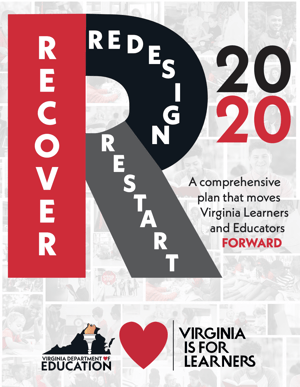 safety upon return to school. The new document includes sample schedules for the gradual return to in-person classes as each school moves through the three-phase reopening plan.
safety upon return to school. The new document includes sample schedules for the gradual return to in-person classes as each school moves through the three-phase reopening plan.
The three phases for reopening, which are flexible recommendations, are as follows:
Phase I: Special education programs and child care for working families
Phase II: Preschool through third-grade students, English learners, and summer camps in school buildings
Phase III: All students may receive in-person instruction with strict social distancing measures in place, which may require alternative schedules that blend in-person and remote learning for students
“School will be open for all students next year, but instruction will look different,” said Virginia Superintendent of Public Instruction Dr. James Lane. “The phased, hybrid approach allows PreK-12 students to have valuable class time and face-to-face interaction with their peers, while prioritizing health and safety by ensuring physical distancing measures are maintained. This plan keeps equity at the forefront by giving divisions the opportunity to deliver in-person instruction to those who need it the most.”
As one recommendation, groups of students would attend classes in-person on alternating days or weeks. This would allow adherence to social distancing requirements and building capacity limits. When not attending class on campus, students would participate in distance learning.
Schools and districts in Virginia will have flexibility to adjust the guidelines based on local conditions and the needs of their school or district communities.
Hybrid Learning and School Reopening Resources
Explore additional resources to support hybrid learning in your district:
